Pond Installation – A Quick Review
Pond Installation as of 9/8/24 – Adding a pond to your backyard or garden can create a serene, natural escape right at home. Whether you envision a tranquil koi pond, a cascading waterfall, or a peaceful reflecting pool, pond installation can dramatically enhance your outdoor space. In this comprehensive guide, we’ll cover everything you need to know about pond installation, from planning and design to maintenance and care.
Why Install a Pond?
Ponds offer numerous benefits, both aesthetic and functional. Here’s why you might consider installing one:
- Enhances Visual Appeal: A well-designed pond adds beauty and elegance to your garden, creating a focal point that draws the eye.
- Creates a Relaxing Atmosphere: The sound of flowing water and the sight of fish swimming can help reduce stress and promote relaxation.
- Supports Wildlife: Ponds provide habitat for various species, including fish, amphibians, and beneficial insects, fostering biodiversity.
- Improves Property Value: A professionally installed pond can increase the value of your property by enhancing its overall appeal.
Planning Your Pond Installation
Before diving into the installation process, careful planning is crucial to ensure your pond meets your expectations and fits well within your space. Here’s how to get started:
- Determine the Purpose and Style Consider what you want from your pond. Are you interested in a koi pond, a naturalistic water garden, or a simple reflecting pool? Each type of pond has different requirements and design elements. Decide on the style and purpose to guide your planning.
- Choose the Location Select a spot in your garden that gets a good balance of sun and shade. Too much sun can encourage algae growth, while too much shade can affect plant growth. Ensure the location is easily accessible for maintenance and away from large trees that could drop leaves and debris into the pond.
- Size and Depth Determine the size and depth based on your space and the type of pond you want. Koi ponds, for instance, need to be deeper to accommodate the fish and provide adequate water volume. A small, shallow pond may suffice for a simple water feature.
- Plan the Design Sketch out your pond design, including any additional features such as waterfalls, fountains, or stream beds. Consider how these elements will integrate with the surrounding landscape and complement your garden’s overall design.
- Budgeting Establish a budget for your pond project. Costs can vary widely based on size, complexity, and the quality of materials used. Include expenses for installation, equipment, plants, and any additional features.
Pond Installation Process
Once you’ve planned your pond, the next step is the installation. Here’s a general overview of the process:
- Excavation Begin by excavating the pond area according to your design. The depth and shape of the excavation will depend on the type of pond you’re installing. Ensure the edges are smooth and the base is level.
- Lining the Pond A pond liner is essential to prevent water leakage. There are various types of liners available, including flexible rubber liners and pre-formed rigid liners. Lay the liner carefully, smoothing out any wrinkles and ensuring it fits snugly against the pond edges.
- Installing Equipment Install necessary equipment such as pumps, filters, and skimmers. Proper installation is crucial for maintaining water quality and circulation. Position the equipment according to the manufacturer’s instructions for optimal performance.
- Adding Water and Testing Fill the pond with water and test the system to ensure everything is functioning correctly. Check for leaks and make adjustments as needed. Allow the pond to settle for a few days before introducing any plants or fish.
- Landscaping Enhance the pond area with landscaping elements such as rocks, plants, and mulch. This not only improves the visual appeal but also helps to blend the pond seamlessly into your garden.
Maintaining Your Pond
Proper maintenance is key to keeping your pond healthy and attractive. Here are some tips for ongoing care:
- Regular Cleaning Remove debris such as leaves and algae regularly to keep the water clean. Use a pond net or vacuum to clean the pond floor and maintain the filtration system.
- Monitor Water Quality Check the water quality periodically, including pH levels, ammonia, and nitrate levels. Proper water balance is crucial for the health of your fish and plants.
- Seasonal Care Adjust your maintenance routine according to the seasons. In winter, you may need to use a pond heater or de-icer to prevent freezing. In spring and summer, focus on controlling algae growth and ensuring proper plant care.
- Inspect Equipment Regularly inspect and clean your pond equipment, including pumps and filters, to ensure they are functioning properly. Replace any worn or damaged parts as needed.
Pond installation is a rewarding project that can enhance the beauty and tranquility of your outdoor space. By carefully planning, choosing the right materials, and following proper installation procedures, you can create a stunning pond that will be a source of enjoyment for years to come. Remember to consider ongoing maintenance to keep your pond in top condition and continue to appreciate its natural beauty.
Ready to transform your garden with a beautiful pond? Start by researching pond installation services or explore DIY options to bring your vision to life. With the right planning and care, your pond will become a cherished feature of your outdoor oasis.
Check out our store for all your water gardening needs! Aquascape products are Aquascape Inc. Certified.
Thanks for reading at Meyer Aquascapes! We hope you’ve enjoyed our post on garden pond design. Please leave a comment below if you liked it or have any questions. We’d love to hear from you! Thanks for stopping by!
How can we help?
Tips for building a great Garden Pond
A garden pond could be a part of a larger waterfall mechanism in a garden or a simple fish pond. There are certain things to be considered while building a garden pond. A nicely build garden pond will add liveliness and beauty to a garden. Below are some tips for building that perfect garden pond.
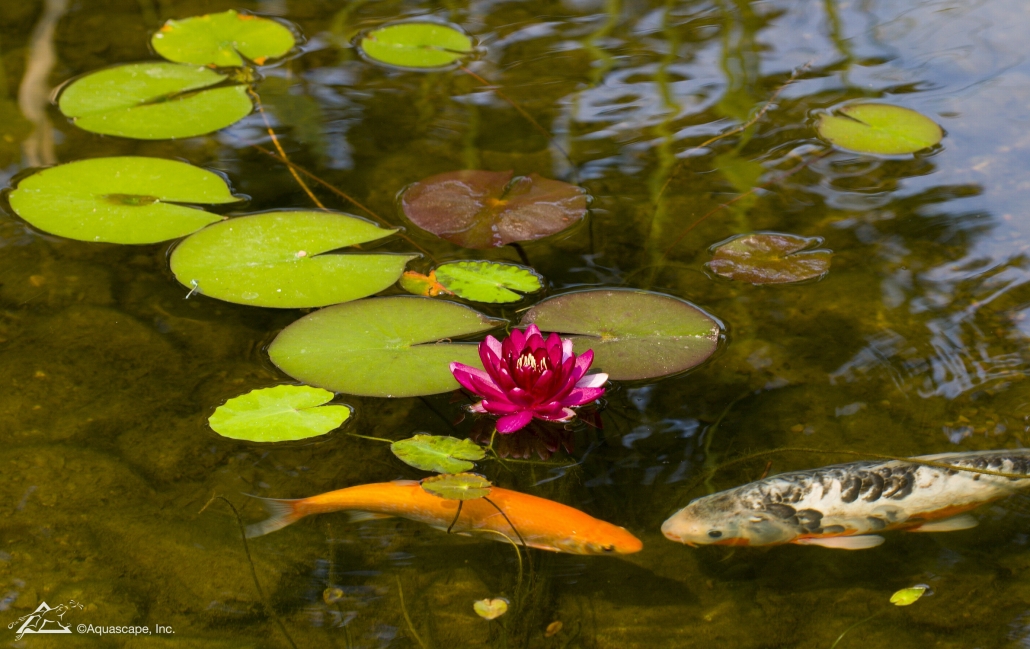
Keep the pond size suitable
It makes sense to build a pond of a size which will ultimately suit the garden. A pond of very small size or one which is too big won’t be suitable. Also, the location of the pond in garden with respect to house should be considered. Take the opinions of some friends or neighbors to see what would be a suitable location and size for the pond. Planning the size of the pond is extremely important before starting the building work.
Protect the bottom of the pond
It’s essential to protect the bottom surface of the pond against burrowing animals. To protect your pond, make sure to lay down a metal sheet on the surface and then lay dirt and mud on it. Then place the underlayment and liner on top of the dirt. Make sure to protect the sides with pond lining as well to prevent the water from getting out.
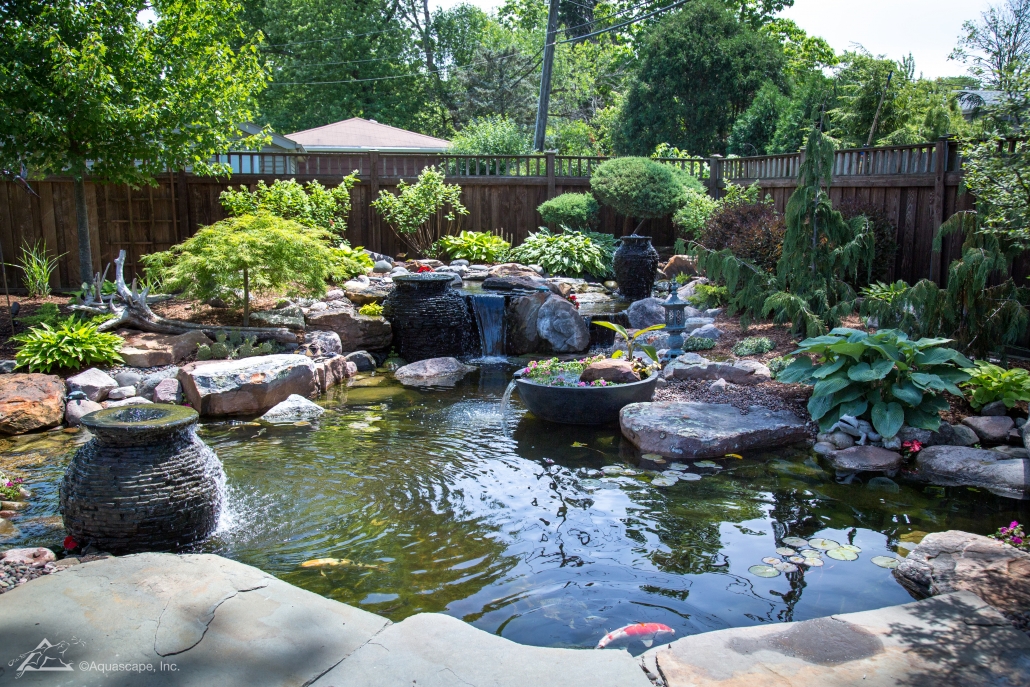
Plan the drainage carefully
It’s a high chance that your pond will overflow, especially in a rainy climate. To avoid water spilling out and damaging the plants or area of lawn outside, identify a spillover area in your garden and implement it. Then channel the water towards the spillover area.
Filling the pond
Be creative and fill the pond with great care. You can use a garden hose to fill in the water only up to a certain level. Add in different types of rocks and rounded stones. You can also add different fishes and plants, and amphibians like small turtles to the pond. While adding fishes and other animals and plants, care should be taken to not add species that are invasive or predatory on each other.
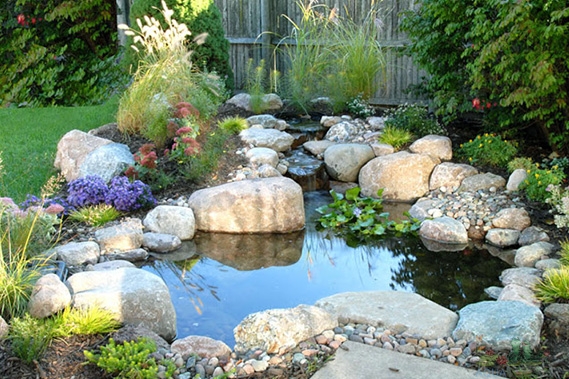
Cleaning the Pond
Garden ponds will collect leaves, dust, debris, and you will have to eventually clean it. Create a pond with a smoother surface and lesser rocks, which will be easier to clean. The cleaning process takes a lot of time and planning should be done while building the pond about how much time one would like to spend on cleaning and pond maintenance going ahead.
Fish Friends for Koi
Fish Friends for Koi
When they are in the wild, Koi live with other species of carp. Koi also get along well with killifish and minnows.
Other types of fish that can be found in the lakes and streams they inhabit are large game fish, such as perch, bass and Catfish.
Koi are peaceful and do not bother or prey on other fish in your pond which makes it great for stocking your pond with a variety of other fish.
Sunfish get along well next to carp with Redear sunfish being the most popular for a carp pond.
Grass carp act as natural pruning system for your pond and they will make great friends for your Koi. Grass carp will also help maintain your plant vegetation as they like to eat and out of control plants that are growing too big.
Since they are similar, goldfish make a great friend for your Koi. They share similar color patterns to Koi and will help compliment the beauty of your precious Koi in their new garden pond.
For other fish, largemouth bass, catfish and striped bass will make perfect mates for your Koi. Bigger fish will require a larger pond size so keep this in mind when selecting the size of your garden pond.
Frogs can be really good friends for your Koi or any kind of amphibian. Local frogs, newts and even salamanders can share the same space as your Koi with no issues.
Try to attract frogs naturally to your pond rather than stocking them from a store. Frogs from pet shops may have bacterial infections or diseases that can spread to your fish. We want to keep your fish as healthy as possible so they can live a long life in your garden pond.
Fish that you want to avoid stocking your garden pond with if you have Koi are Bluegill. Carp and Bluegill are rivals and will be destructive to your garden pond as they compete for resources and food.
Small fish such as nano fish should be avoided too. These smaller fish will not be happy swimming around with large Koi and will be anxious and nervous when in an enclosed garden pond with them.
Lastly, the best option to stock your Koi pond with is more Koi. They like to be in a group or a school and the minimum for that is at least 5. If you have a larger pond, you may be able to accommodate up to 15 individual Koi. Be sure to consult with our professionals about the needs for your Koi pond setup.
How can we help?
Koi Pond Setup
Pond Setup for Koi
Koi are the more sophisticated version of their wild versions which are common carp. Carp are traditionally native to Europe and Asia.
The habitat of carp are lakes, streams and ponds with mud near the bottom and minimal water flow. They can be found in temperate and tropical areas and they like water temperatures over 70 degrees F.
Carp are most active in the dim lit hours near dusk and dawn but they will forage for food at all times of day.
Achieving these living conditions for your new Koi is not a hard task.
Koi Pond Setup
Koi prefer temperatures between 74 to 86 degress F year-round. For areas where it is colder, a heater system will keep them from freezing and protect your valuable fish.
A small stream or waterfall is fine for your Koi but they do not require an water flow to be happy.
For the pH of your pond water, it should be kept between 6 and 9. Crushed limestone can be used to help maintain the pH levels in your garden pond.
For best results, a Koi pond with concrete and rubber lining are best. For the bottom of the pond, a substrate that mimics a mud consistency will have your Koi feeling right at home.
A beautiful outdoor water garden will give the best result for a pond setup. The plants should be non-invasive so they don’t damage the natural ecosystem for your new Koi friends.
The best plants for your water garden will included:
* pickerels
* floating pondweed
* water lilies
* cattails
* water hyacinth
* duckweed and more
Willows and other shade trailing trees around your water garden pond are recommended by other garden pond owners. These will help to provide extra shade and cover for your fish.
How big should your Koi pond be?
250 gallons of water is the minimum for keeping a Koi in a pond. A school of Koi may require over 1000 gallons of water.
Ten gallons of water is needed for every inch of fully grown Koi as a rule of thumb. This same rule can be applied to other fish as well. Because Koi can reach 3 feet in length, this means that 250 gallons is the absolute minimum for one adult.
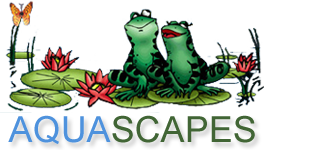
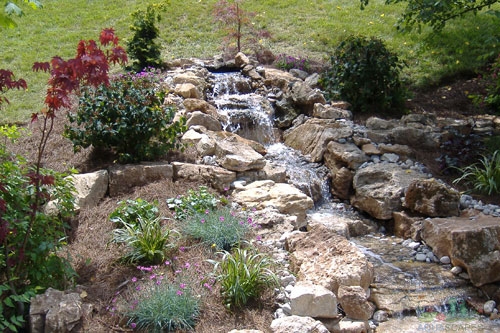
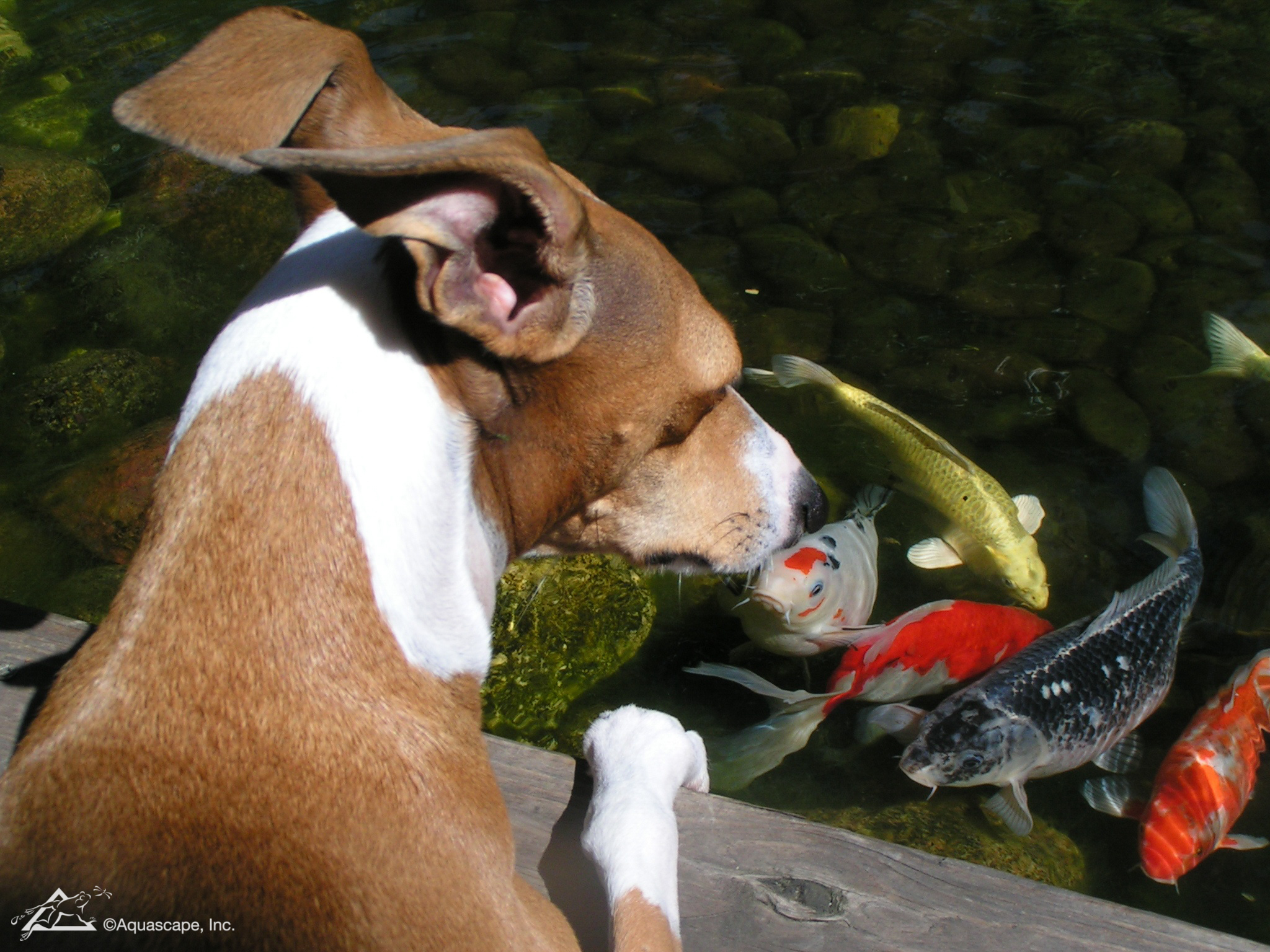
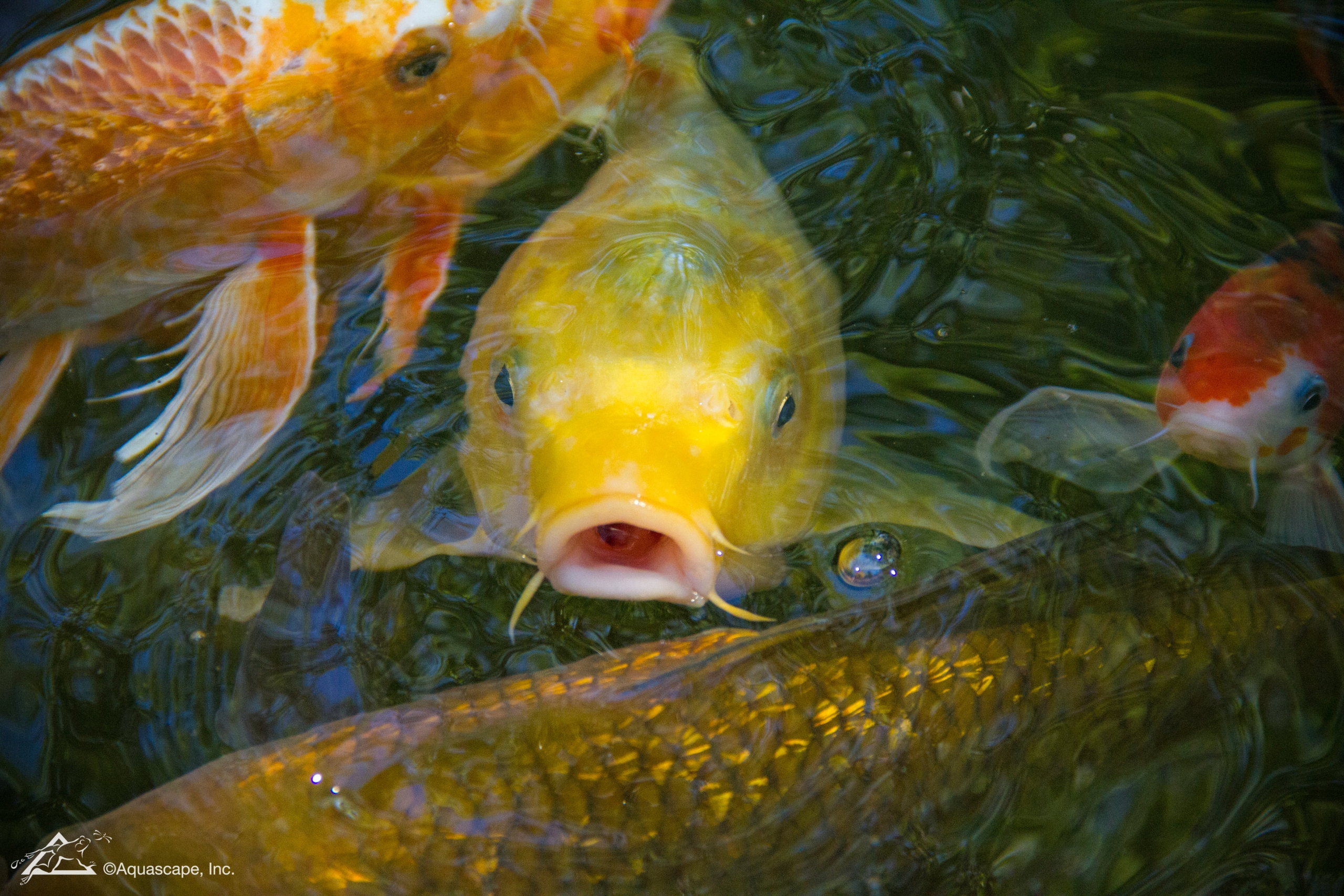
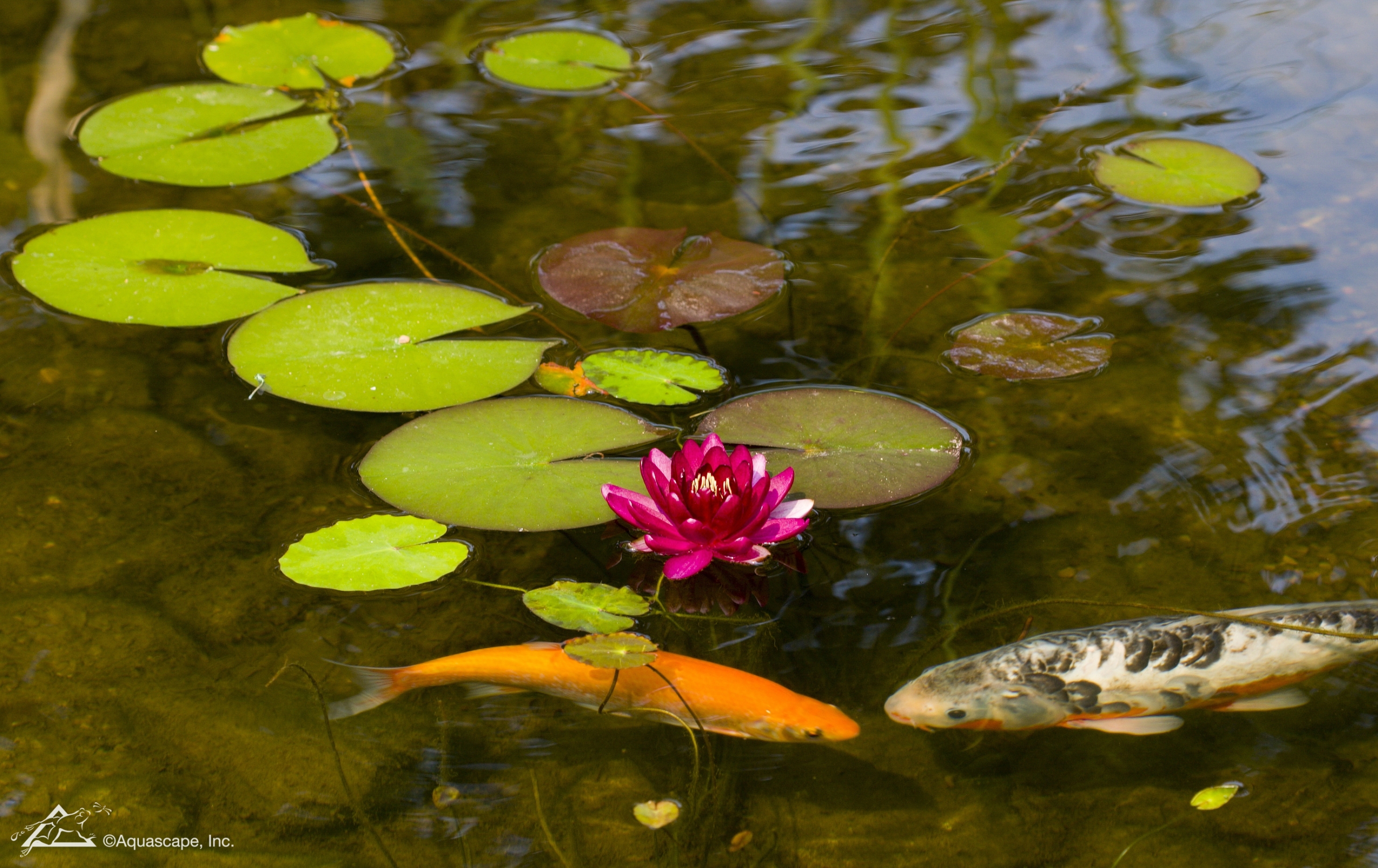


 Meyer Aquascapes
Meyer Aquascapes